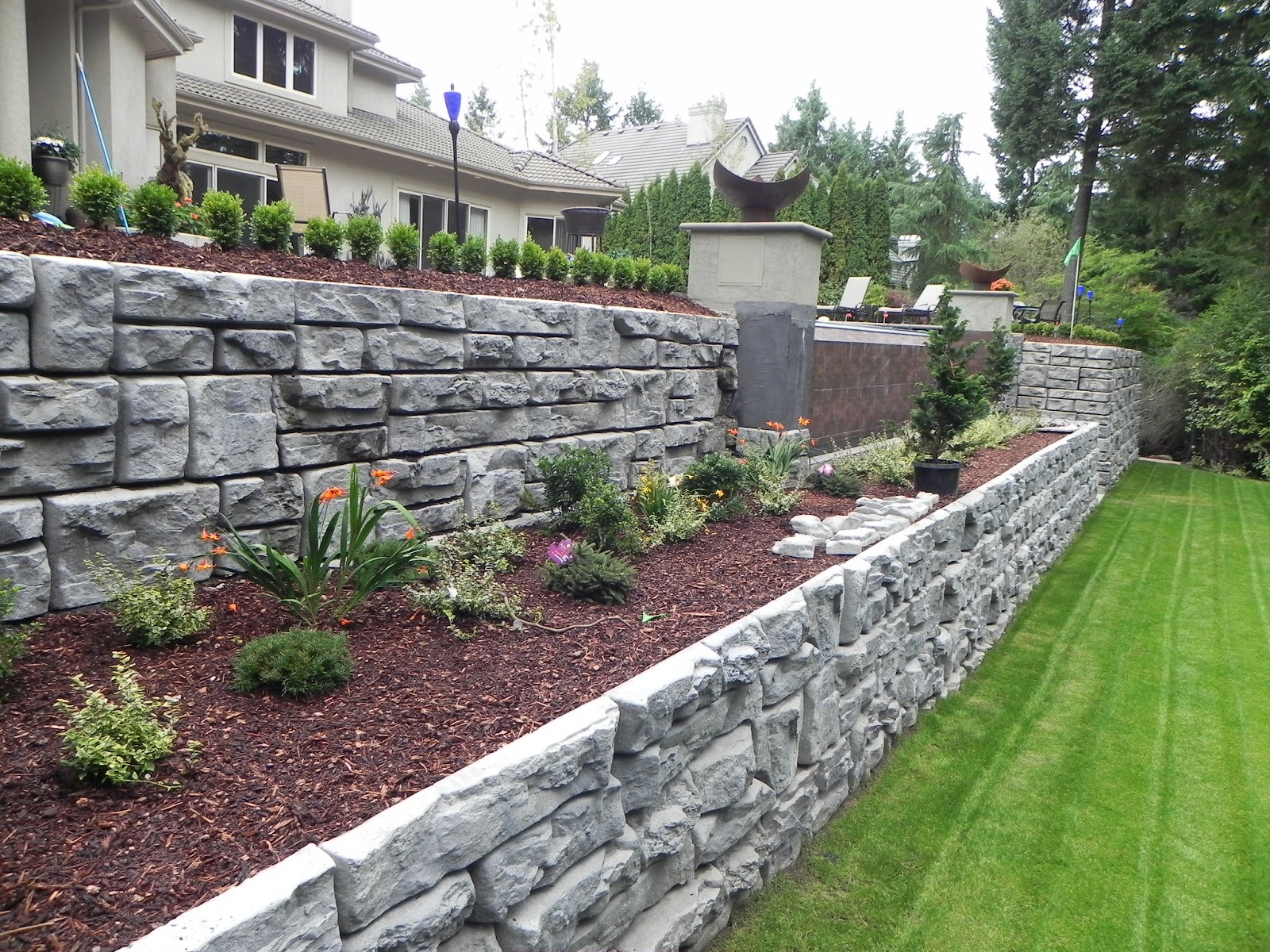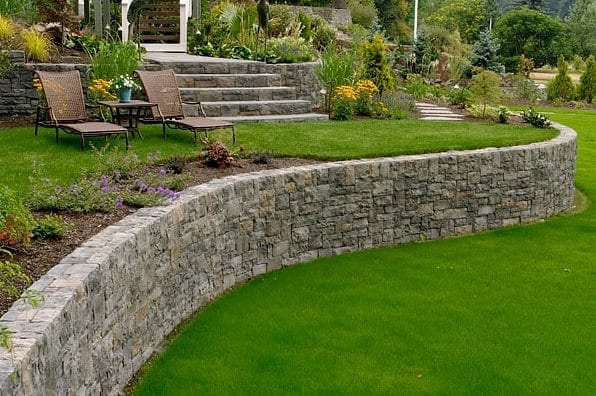Making Certain Architectural Integrity: The Importance of Effectively Created Retaining Wall Surfaces in Preventing Incline Failing
In the world of civil design and building, the significance of correctly created maintaining wall surfaces in averting incline failing can not be understated. These frameworks work as crucial safeguards versus the all-natural pressures that can destabilize slopes and create possibly dreadful repercussions. Comprehending the meticulous design considerations, construction methodologies, and upkeep techniques related to maintaining walls is fundamental in guaranteeing their effectiveness and longevity. By exploring the intricate interaction between these elements, a much deeper comprehension of the essential function that keeping walls play in maintaining structural honesty and avoiding slope failure emerges. Retaining Walls Sunshine Coast.
Role of Retaining Walls in Stability
The necessity of retaining wall surfaces in ensuring slope stability is critical in civil engineering techniques. Preserving walls serve a critical role in avoiding dirt disintegration, managing water overflow, and preserving the architectural honesty of inclines. By sustaining near-vertical or vertical grade modifications, preserving wall surfaces assist to rearrange lateral stress put in by the dirt, therefore decreasing the threat of incline failing.
One trick feature of retaining walls is to combat the pressure of gravity acting upon the dirt mass behind them. This is attained with correct layout and building, which thinks about aspects such as soil type, wall surface height, drain arrangements, and possible additional charge tons. By properly retaining soil within defined boundaries, these structures aid to stabilize slopes and prevent landslides.
Additionally, preserving walls add to the looks of landscapes while supplying functional advantages. They can develop terraced degrees for landscaping, assistance roads or frameworks on hills, and improve the total usability of sloped terrain. Essentially, keeping walls play a vital role in preserving incline stability and ensuring the safety and security and long life of civil engineering tasks.
Factors Affecting Wall Surface Efficiency
Elements that influence the performance of preserving wall surfaces consist of soil buildings, wall surface design, and external tons. Dirt residential properties play an important role in establishing the security and performance of a preserving wall surface. Elements such as dirt type, communication, internal rubbing angle, and groundwater conditions can affect how well a wall surface keeps the dirt behind it. The style of the retaining wall is one more essential aspect that affects its effectiveness. Proper wall surface layout thinks about aspects like wall elevation, wall surface kind (e.g., gravity walls, cantilever wall surfaces), reinforcement products, water drainage systems, and building and construction methods to make certain the wall can stand up to the side stress applied by the retained soil. In addition, external lots, such as surcharge tons from surrounding frameworks or website traffic, seismic pressures, and water pressure, must be carefully reviewed throughout the design and construction stages to guarantee the wall can adequately resist these exterior pressures. By considering these elements comprehensively, designers can create maintaining wall surfaces that properly avoid slope failure and ensure long-term architectural stability.
Layout Factors To Consider for Preserving Walls
Including the important elements of dirt residential properties and exterior tons into the structural design procedure is essential for developing effective keeping walls that guarantee slope security. When creating keeping walls, designers should carefully evaluate the attributes of the bordering soil, including its compaction, drain, and kind homes. Recognizing these dirt homes is essential for determining the appropriate wall density, reinforcement, and height required to hold up against the side pressure exerted by the dirt mass.
Furthermore, outside tons such as surcharge lots anchor from close-by structures or traffic, in addition to seismic forces, need to be considered throughout the design phase. These lots can substantially affect the security and efficiency of a maintaining wall surface, demanding using appropriate layout strategies and products to reduce potential failure threats.
In addition, the selection of ideal materials, such as concrete, rock, or timber, need to align with the site-specific problems and aesthetic requirements. Aspect of security factors to consider, water drainage provisions, and building and construction strategies are additionally important aspects that influence the total layout and functionality of keeping wall surfaces in protecting against incline failing. By thoroughly considering these style factors to consider, designers can guarantee the architectural honesty and long-lasting security of keeping wall surfaces.

Building Best Practices for Longevity
When building retaining walls for ideal durability and durability, adherence to industry-standard techniques and precise focus to information are paramount. To make certain the sturdiness of a retaining wall surface, appropriate website preparation is necessary.
Integrating support techniques, such as geogrids or steel bars, can boost the architectural stability of the retaining wall surface and stop prospective failures. Appropriate backfilling procedures, consisting of compaction and drainage considerations, are additionally crucial for the wall surface's toughness. Routine maintenance and inspections are recommended to resolve any type of signs of wear, erosion, or structural concerns without delay. By following these construction ideal techniques, maintaining wall surfaces can endure the test of time and efficiently protect against incline failure.
Importance of Correct Upkeep
Routine maintenance is essential for protecting the architectural stability and functionality of retaining walls with time. Ignoring upkeep can lead to issues such as erosion, splits, or also full failing of the wall surface, threatening the stability of the slope it sustains. To guarantee that preserving walls remain to execute their designated feature effectively, routine assessments must be conducted to recognize any kind of indications of deterioration. These assessments can help in identifying very early indication of possible issues, enabling for timely repair work to be accomplished prior to the issues escalate (Retaining Walls Sunshine Coast).

Verdict
In verdict, navigate to this website preserving wall surfaces play a crucial duty in ensuring architectural stability and preventing slope failing. By thinking about factors affecting wall surface efficiency, adhering to find out make considerations, complying with building and construction ideal practices, and implementing proper upkeep, the toughness of maintaining walls can be optimized. Retaining Walls Sunshine Coast. It is necessary to recognize the importance of properly created preserving walls in keeping security and protecting against possible threats related to incline failing
Factors that affect the effectiveness of preserving walls consist of dirt properties, wall surface layout, and outside lots. Appropriate wall style thinks about variables like wall elevation, wall kind (e.g., gravity wall surfaces, cantilever wall surfaces), support products, drainage systems, and construction strategies to make sure the wall surface can withstand the lateral stress put in by the preserved dirt. By considering these variables thoroughly, engineers can build retaining walls that efficiently avoid incline failure and make certain long-lasting structural honesty.
Maintenance tasks might consist of clearing drain systems to stop water accumulation behind the wall surface, fixing any type of noticeable splits or damage, and ensuring that the wall is totally free from greenery that can exert stress on the framework. By taking into consideration elements influencing wall surface effectiveness, sticking to make considerations, adhering to building best practices, and executing proper upkeep, the toughness of preserving walls can be optimized.